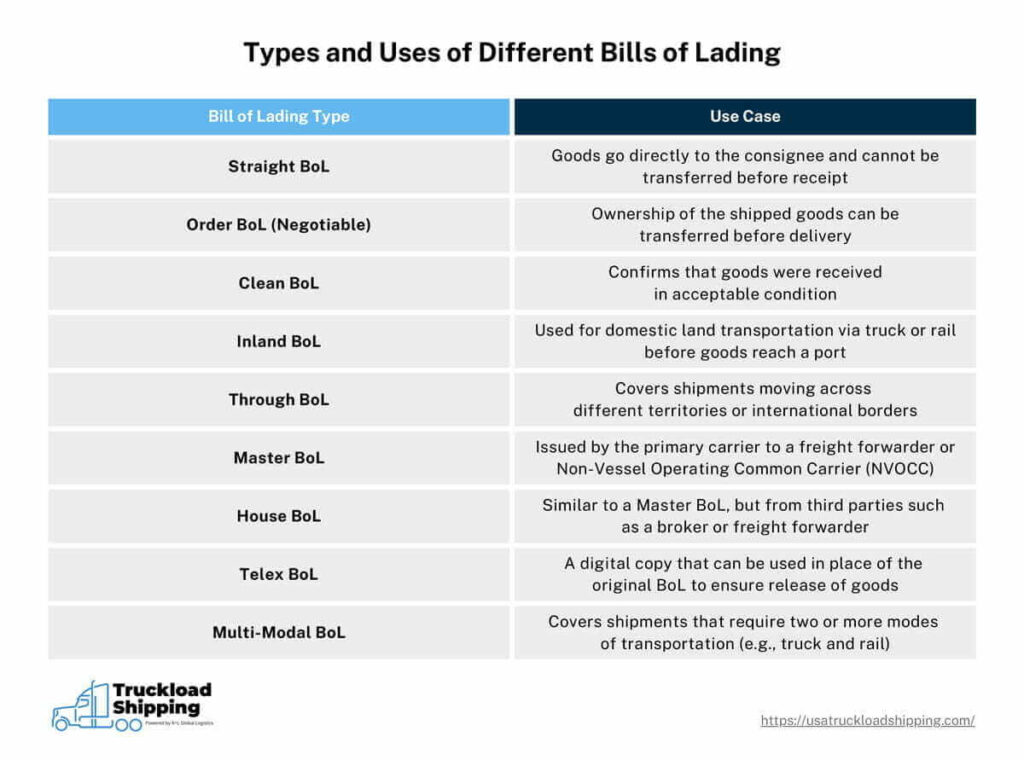Freight shippers and carriers require detailed documentation to track transactions from shipment to receipt of goods. The bill of lading, also known by the acronyms BoL or B/L, is one such document. Knowing the difference between the most common freight BoLs is essential for all parties involved in a freight delivery transaction.
Key Takeaways
In this article, you’ll learn what a shipping bill of lading is, some of the most common varieties of BoLs, and how they differ from other important freight documents.
In transportation, a BoL is used to communicate several key pieces of information between brokers, carriers, shippers, and receivers. It is usually issued by the carrier or shipper, though other parties such as brokers and freight forwarders are responsible for this under certain circumstances.
Some specific pieces of information that should be found on nearly any BoL are:
While all bills of lading need to contain these key pieces of information, a variety of BoLs exist to accommodate specific freight shipping types. I’ve compiled the most commonly used BoLs for freight and truckload shipping in the graphic below.

If your shipment moves via international waters, you will also need to use an ocean bill of lading during transport from one country to another.
Another shipping document called proof of delivery (PoD) sometimes gets confused with the BoL.
While a bill of lading establishes ownership and terms of shipment, the proof of delivery is focused on confirmation that the goods were received in acceptable condition. The PoD does not confer rights of ownership to the signee.
Related: Bill of Lading vs Proof of Delivery: Key Differences in Shipping
While it’s not the most exciting aspect of freight shipping, proper documentation with the correct bill(s) of lading is essential for shippers to run an orderly business. Partnering with an experienced third-party logistics provider (3PL) will help ensure that your shipping paperwork is accurate. If you’re a shipper looking for this and other logistics services, you’re in the right place.
USA Truckload Shipping has decades of experience connecting shippers to carriers, warehouses, and other service providers. From short rails to long hauls, our network can store and ship your goods to points in the U.S. and beyond
Our full list of services includes:
Don’t let improper documentation delay your shipments. Call us at (866) 353-7178 or submit a risk-free request for proposal online today!
R+L Global Logistics
315 NE 14th St., Ocala, FL 34470